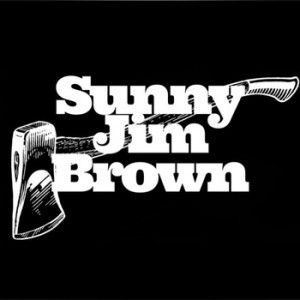1. “Audubon” – Jon Solo. Here’s a gentle yet expansive sonic soundscape dedicated to the famous naturalist. The arrangement here is simple-sounding yet complex in its construction, which makes for great work.
2. “Taller” – Silas William Alexander. An intimate folk tune that has the gravitas of the best folk singers, an earnest vocal performance that reminds me of my long-lost Page France, and a wistful sweetness that’s irresistible. Alexander is one to watch.
3. “Young Romance” – Redvers Bailey. Makes me think of Juno, The Life Aquatic, Beirut, Belle and Sebastian, honest quirkiness (“I don’t try to do this, this is just how I sing”), and lots of good songs. Mile-a-minute lyrics, chunky chords, humble melodies–what more can you ask for in an indie-pop tune?
4. “Going Home” – Jesse Rowlands. We don’t write real folk tunes that much anymore, but here’s one about a Southern deserter (I’m guessing from the Civil War) who tries to get back to his home. The voice-and-guitar songwriting sounds way more full than just those two pieces. It’s an engaging, beautiful tune.
5. “Little Moment” – Luke Rathborne. Delicate guitar work always gets me; so does the confidence to create small, quiet pop songs. This tune just makes me smile.
6. “Someone to Love Me” – Jont and the Infinite Possibility. Do you miss early-eras Coldplay? Rush of Blood to the Head, Parachutes, etc.? You’ll love the full-band, wide-screen, acoustic-grounded pop-rock here.
7. “Strangers” – Brad Fillatre. The vocal performances in this alt-country tune are deeply affecting, all the more so because of the unexpected nature of the clear, yearning chorus melody in relation to Fillatre’s gritty, rough verse performances.
8. “Hymns” – Grado. A subtle but strong opening guitar line leads into a unique combination of rainy-day indie-pop, modern folk music, and upbeat indie-pop enthusiasm. There’s quite a lot going on here in what seems like a simple, confident tune.
9. “Gentle Giant” – Yankee & the Foreigners. Charming, woodsy, full-band folk for fans of Fleet Foxes, The Fox and the Bird, new-school Decemberists, and Beirut’s vocalist.
10. “Anchor Up” – Eric George. Walking-speed folk troubadour work with great vocals, a stellar production job, and a remarkably chill vibe.
11. “Anchor (Argentum Remix)” – Novo Amor. A For Emma-style Bon Iver vocal performance over fingerpicked guitar and piano chords gets an ’90s techno beat backdrop; to my surprise, it sounds totally rad.
12. “Believe in Me” – Jason P. Krug. A tender keys line (maybe kalimba?) and a swooning cello accompany Krug’s smooth voice and lyrics of Eastern mysticism; reminds me of the quieter Dan Mangan songs, in that there’s a lot of emotion but not a lot of melodrama.
13. “Fire Engine Red” – Robert Francis. Francis sounds completely assured and at home in this minimalist songwriting environment: with a few rim clicks, distant synths, and a rubbery bass line, Francis creates a distinct, careful mood. It gets even better when he layers his acoustic guitar over it.
14. “The Haunted Song” – Maiah Wynne. Wynne wrote a solo vocal piece, then performed it in a big empty space accompanied by claps, stomps, and creepy background vocals. At just over 1:19, it’s intriguing and unconventional.
15. “Fork End Road” – Ark Royal. Big harmonies, swift picking, and great strings–this song hits you with a lot right up front. Gotta love a track that captures you from the get-go. Things get better from there, too.




